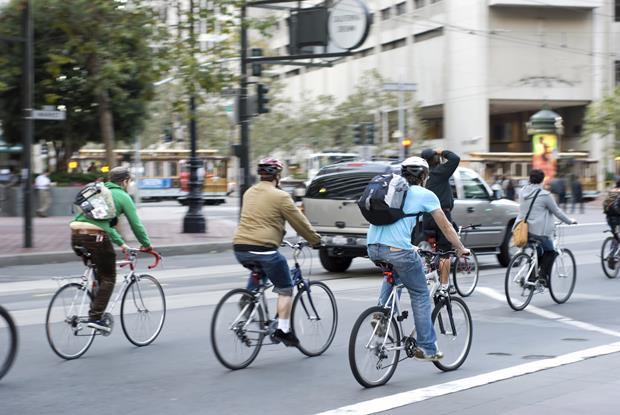
How to stay safe cycling on the road

Road cycling is a great way to get around, whether it’s for business or leisure. Ditching your car to make your daily commute or trip across town on two wheels is a brilliant way to keep fit as well as being much more environmentally and economically friendly.
Although cycling on the open road is safe when done right, it can seem very daunting to beginners. Especially in busy city centres, traffic volume and complicated road layouts can make cycling seem more dangerous than it is in reality. Some basic safety knowledge can go a long way in keeping rookies firmly in the saddle.
Pavement cycling should be avoided
It is a common misconception that cycling on the pavement is safer than cycling on the road out of the way of all those big scary cars. In fact, pavement cycling actually throws up a lot more potential hazards. Benches, road signs, street lights and pedestrians are just a few of the obstacles you have to watch out for. Not to mention, cars reversing out of driveways might not expect a cyclist to pass behind them.
Be careful at junctions
When approaching junctions, remember to always position away from the side of the road. This will give you a much wider field of vision to look out for oncoming vehicles and make sure you are seen by other road users. Remember that it’s better to be safe than sorry when moving away at junctions. It can be very easy to misjudge a vehicles speed, or for the motorist to misjudge yours. If in doubt, wait patiently for the vehicle to pass. It’s also important to be aware that cars have blind spots that mean the driver may not have spotted you even if you are close.
Be cautious when passing parked cars
If it’s safe to do so, you should pass a parked car at least a door’s width away from the vehicle. This means you will be visible in the driver’s mirrors if they are about to move away from the side of the road. It also means that if the door opens unexpectedly, you will avoid a nasty collision.
Don’t rely on high visibility gear
Of course, high visibility lights, reflectors and clothing are always helpful – especially in the dark. However, some cyclists are prone to putting too much faith in their fluorescent gear. You should never simply assume drivers have seen you. You should instead try to make eye contact with other road users when possible to ensure they know you are there.
Cover your brakes
Your hands should be wrapping around your brakes in plenty of time as you approach junctions. This will cut down your braking time if there is a need to make an emergency stop and could come in very handy. It is also advisable to apply this precaution if you are ever unsure you’ve been seen by a driver.
What help is available if all else fails?
If you’re still unlucky enough to be involved in an accident while cycling on the road, there is help available to you. First things first, you should report the incident to the police and seek medical treatment if required. You should find out how you can report a road accident to your local police force in a non-emergency situation.
After the accident, if you’ve been injured it could mean time off work, expensive physio treatment or even permanent disabilities. For this reason, it’s understandable that victims of cycling accidents will often want justice. If you wish to make a cycle crash claim, a cycling lawyer will be able to offer you expert advice on your next steps.



